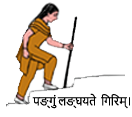The wrist and hand make a complex structure with 27 bones joined by ligaments at various joints. Many joints and 36 intrinsic muscles are responsible for performing multiple functions due to movements in various directions. Hand pain with or without weakness and numbness can occur in nerve root compression due to spondylosis of the cervical spine (neck). Pain in this area can be related to occupational overuse (activities and hobbies), age, hand dominance, injury, pregnancy, diabetes, and other endocrine disorders. Computer-related wrist and hand problems are due to repetitive work, static posture, and using excessive force while operating keys or mouse. Breaking up repetitive activities, avoiding too much force, maintaining a proper posture, and avoiding stress can prevent computer-related hand problems. Early identification of the problem (pain, tingling, and numbness) is essential to prevent the progression of this condition.
The location, pattern, severity, and type of pain are critical in diagnosing wrist and hand disorders. However, this may not be easy in all cases. Arthritis of the wrist and small hand joints is characterized by swelling, pain, and movement restriction. Osteoarthritis usually affects small joints at the tips of fingers. Rheumatoid arthritis affects joints at the middle and base of the fingers and wrist joints and is associated with prolonged morning stiffness.
Some other important disease conditions in this region are as follows:
- Carpal Tunnel Syndrome: Carpal tunnel, formed by wrist bones and ligaments, is a rigid tunnel at the base of the hand overlying wrist. The median nerve passing through this tunnel may get compressed, leading to loss of sensation and pain on the palmar aspect of the three and a half fingers (thumb, index finger, middle finger, and part of ring finger) and weakness of corresponding muscles. The initial symptoms are usually burning or tingling numbness which can disturb sleep at night. Pain may radiate up to the arm. The grip may weaken later. Few causes of carpal tunnel syndrome (CTS) include – occupational stress, injury, pregnancy, menopause, diabetes, hypothyroidism, rheumatoid arthritis, and congenital predisposition. CTS is more common in women. The dominant hand is initially affected in most cases. Early diagnosis is essential to avoid permanent nerve damage. Bend your hands down and press the backs of your hands over each other for one minute. This maneuver elicits numbness of fingers in cases of CTS. A nerve conduction test is helpful for the diagnosis of CTS. Treatment of CTS includes lifestyle modification, rest, splinting, and pain killers. Steroid injection at the wrist is an effective treatment to reduce swelling and has long-lasting effects. An appropriate exercise regime must follow injections. The underlying condition, such as hypothyroid disease, also needs to be treated. Surgery may be contemplated if two or more injections fail to bring significant relief.
- De Quervain's Tenosynovitis: Pain and swelling of the tendon along the base of the thumb is known as De Quervain's tenosynovitis (DQT). Pain may radiate along involved muscles (abductor pollicis longus and extensor pollicis brevis) in the arms. Repetitive occupational injury is the usual cause of DQT. Lifting heavy weights can also strain these muscles. Deviation of closed fist towards little finger will elicit pain in the swollen area. Rest, splinting (especially during work), and pain killers relieve pain to a certain extent. Local steroid injection is helpful in most cases. Surgical release is rarely required and may be done in refractory cases.
- Ganglion: Ganglions are the most common soft tumors of the hand. Small to medium-sized lumpy swelling under the skin at the back of the wrist arises from a tendon sheath or joint. Small ganglion cysts may also appear on fingers. Ganglions are filled with a thick jelly-like fluid similar to joint fluid. They can be soft or firm and are usually painless. However, smaller ganglions can be painful. A tight wrist brace may decrease the size of the swelling. Needle aspiration of swelling followed by local steroid injection is the treatment of choice. Surgery is indicated for painful refractory ganglions and cosmetic reasons.
- Trigger Finger: The tendon sheath (covering a tendon) thickens and prevents the gliding of finger-tendon, leading to trigger finger. A finger gets locked when flexed, which is followed by a release like a trigger. The cause of the trigger finger is not known and is believed to be due to repetitive trauma. The problem can be due to localized swelling or a nodule over the tendon itself. The problem can be demonstrated by clenching the fist and opening the fingers. The trigger finger does not open up easily and may have to be straightened manually. A tender nodule may be palpable at the base of the finger over the palm. Local steroid injection relieves the problem for many months in about 50% of cases. The injection may be repeated in cases of recurrence. Surgical intervention is indicated in severe cases with painful locking and in those with failure of local injections.
